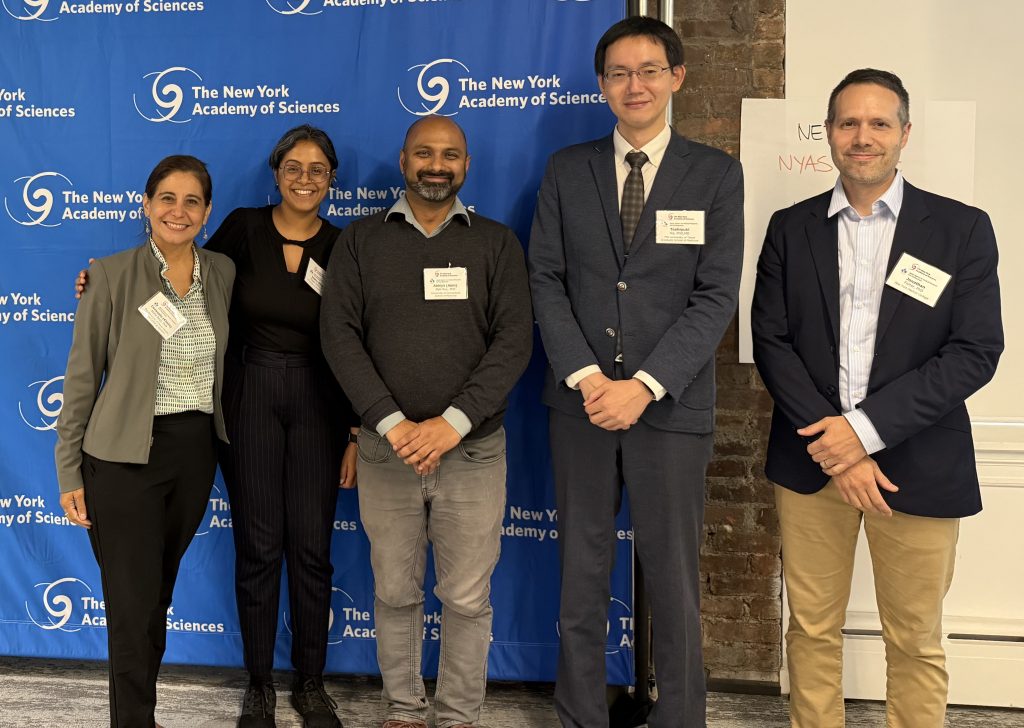September 23, 2025. Dr. Abhijit Deb Roy was selected for the Interstellar Initiative which is a program organized by The New York Academy of Sciences (NYAS) and The Japan Agency for Medical Research and Development (AMED) to promote international and interdisciplinary collaborations. 
Author: Mikhail Blinov
Ryan Spangler: New University Director to Lead Vivarium and Whole-Cell Modeling Development
May 7, 2025. CCAM is thrilled to welcome Ryan Spangler as our new University Director, joining the Agmon Lab to lead software development for the Vivarium framework and our next-generation E. coli whole-cell model. Ryan brings nearly 20 years of experience in research software engineering, with a career spanning major institutions at the forefront of systems biology. His recent positions include senior software development roles at Stanford University, The Allen Institute for Cell Science, and Altos Labs’ Multiscale Modeling Group, where he helped develop cutting-edge tools for integrating biological data and simulations. In his new role, Ryan will oversee the engineering roadmap for Vivarium 2.0, expanding its capabilities for composable, multiscale biological modeling, with a focus on making whole-cell models accessible and reusable for the broader research community. We are excited to have Ryan on board as we scale up our efforts to build open, collaborative platforms for modeling life from molecules to cells and beyond!
Advancing Space Biotechnology Through Whole-Cell Models: AFOSR Symposium
March 18, 2025. Dr. Eran Agmon recently presented his research at the AFOSR-sponsored workshop, Advancing Space Biotechnology through Whole-Cell Models and Functional Annotation. The symposium brought together leaders in synthetic biology, genomics, and computational modeling to explore how whole-cell models can drive innovation in space-based biotechnology. Dr. Agmon presented his work on building a multiscale simulation of Escherichia coli, using the Vivarium framework. The platform integrates diverse submodels—spanning gene regulation, metabolism, and cell growth—into an extensible whole-cell simulation environment. His presentation highlighted how Vivarium’s architecture supports interoperability across simulation methods, paving the way for next-generation virtual cells that can inform biomanufacturing to support long-term space missions.
The 26th Annual CompCellBio workshop
February 28, 2025. The 26th Computational Cell Biology workshop took place ONLINE for the 5 days, February 24-28th. Cell biologists and biophysicists leaned how to use VCell (https://vcell.org/), COPASI (https://copasi.org/ ) and SpringSalad (https://vcell.org/ssalad) software to develop spatial and non-spatial models using deterministic, stochastic, agent- and rule-based approaches.
Dr. Blinov’s publication in NPJ SysBio
February 4, 2025. Dr. Blinov’s publication in NPJ Systems Biology and Applications details how to use AI tools to investigate systems biology resources related to mathematical modeling: Kannan, M., Bridgewater, G., Zhang, M., & Blinov, M. L. (2025). Leveraging public AI tools to explore systems biology resources in mathematical modeling. npj Systems Biology and Applications, 11(1), 15: https://doi.org/10.1038/s41540-025-00496-z
Remarkably, Meera Kannan and Gabrielle Bridgewater are two high school student interns who worked on this project under Dr. Blinov’s supervision during the